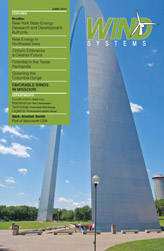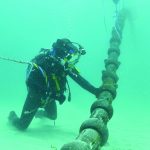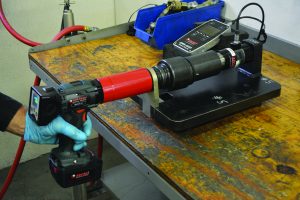I expect we have all heard the message: While placed on hold, a voice says “to ensure quality this call may be recorded.” If ensuring quality meant that you only had to make a recording of a particular conversation, action, or task, then quality and quality results should no longer be an issue today. These companies will likely use our recorded messages as a training tool for new employees, or perhaps find ways to “up-sell” more products. If they are able to provide better customer satisfaction or greater revenue as a result then it isn’t quality they’re ensuring, it’s results.
Quality in maintenance service, safety, and project performance are all difficult to define. They indicate something different for everyone. Quality maintenance may mean that the turbine maintenance tasks were completed within a specified time period and will continue to operate between scheduled cycles without a failure. To some it may mean that it’s the best value for the dollar spent, despite the later outcome. Particularly in safety, quality is often measured by metrics related to the reporting of injuries or near misses. Project performance quality is also difficult to express, as a project that maximizes production might be higher on the quality scale than one with a focus entirely on availability.
We write policies and procedures, produce templates, send out checklists, and apply signage. We conduct orientation meetings, refresher training, and issue certifications. Still, when it comes to quality results, we can be reminded time and again that what is common sense isn’t always common practice. For those who struggle with achieving consistent quality outcomes, you will find there is a profound distinction between education and training in that education explains the “why,” and training shows the “how.” Both are equally important in service work, especially when technicians working in a wind turbine are expected to think on their own and produce quality results that use creative methods in troubleshooting, overcoming delays, and improving procedures. In wind services, when we speak of quality results we are really speaking of the individual; of how much ownership they have in their work. Quality is directly proportional to the levels of self-accountability and self-directed behavior you have on your team.
For many finding the time to manage, coach, and train the staff in addition to observing their work for quality assurance is very challenging. Status quo for any site manager can be consumed with extinguishing fires rather than preventing them. If you cannot manipulate the actions of the technician and change them at any point in time, you will be hard pressed to guarantee anything. The challenge comes from inherently not having control over every aspect of the task. Ownership of the outcome is what each technician must bring to the project, and that can be supported through an auditing process that confirms technicians are performing their tasks correctly, and that standards of quality are defined across the team in a consistent way. Peer-to-peer observation can be an effective tool for any organization, but particularly for wind services, as this may be the most simplistic way of getting your hands around both service and safety quality issues.
Observation of an action, feedback, and observation again is a tried and true methodology that helps to verify an expected result. Conducted in thousands of companies today, a peer review can be applied to wind services as a method of field training, and it can improve the consistency of the service outcome. The observer is not responsible for corrective action, but rather is the one person who echoes a perspective of the results through any form of service audit checklist, behavior audit checklist, or in addressing safety, a morning tailgate form. The form isn’t used for discipline; rather it is something that is shown to the observee in an open discussion between the peers. For example, two technicians completing a safety tailgate might discuss environmental or turbine conditions that discourage safe behavior and encourage at-risk behavior. They might also consider ways to remove barriers to safe behavior. For their part, the site manager would offer positive words of approval to recognize certain safe behavior, but would not give disapproval statements nor directions related to any observed at risk behavior. For this process to be effective it must be focused on enhancing ownership, not as an authority driven inspection.
At one U.S. wind project, the “total recordable incident rate” dropped by nearly 300 percent in a single 12-month period once a daily tailgate process was initiated. The rate continues to remain at this level due to a peer-led review process. Certainly some complaints were expected, and loopholes were found and quickly plugged during the early stage of the program, but the results show that eventually technicians “got it” and understood the importance of taking a few minutes at the start of the day to assess their safety situation. Expanding on this with peer reviews as part of a scheduled service can open the door to improving the conduit of learning between senior and junior level technicians, faster teaching of troubleshooting practices, and overall enhanced quality and safety. Geared at performance, not discipline, the peer review process cultivates involvement, ownership, and empowerment.
































